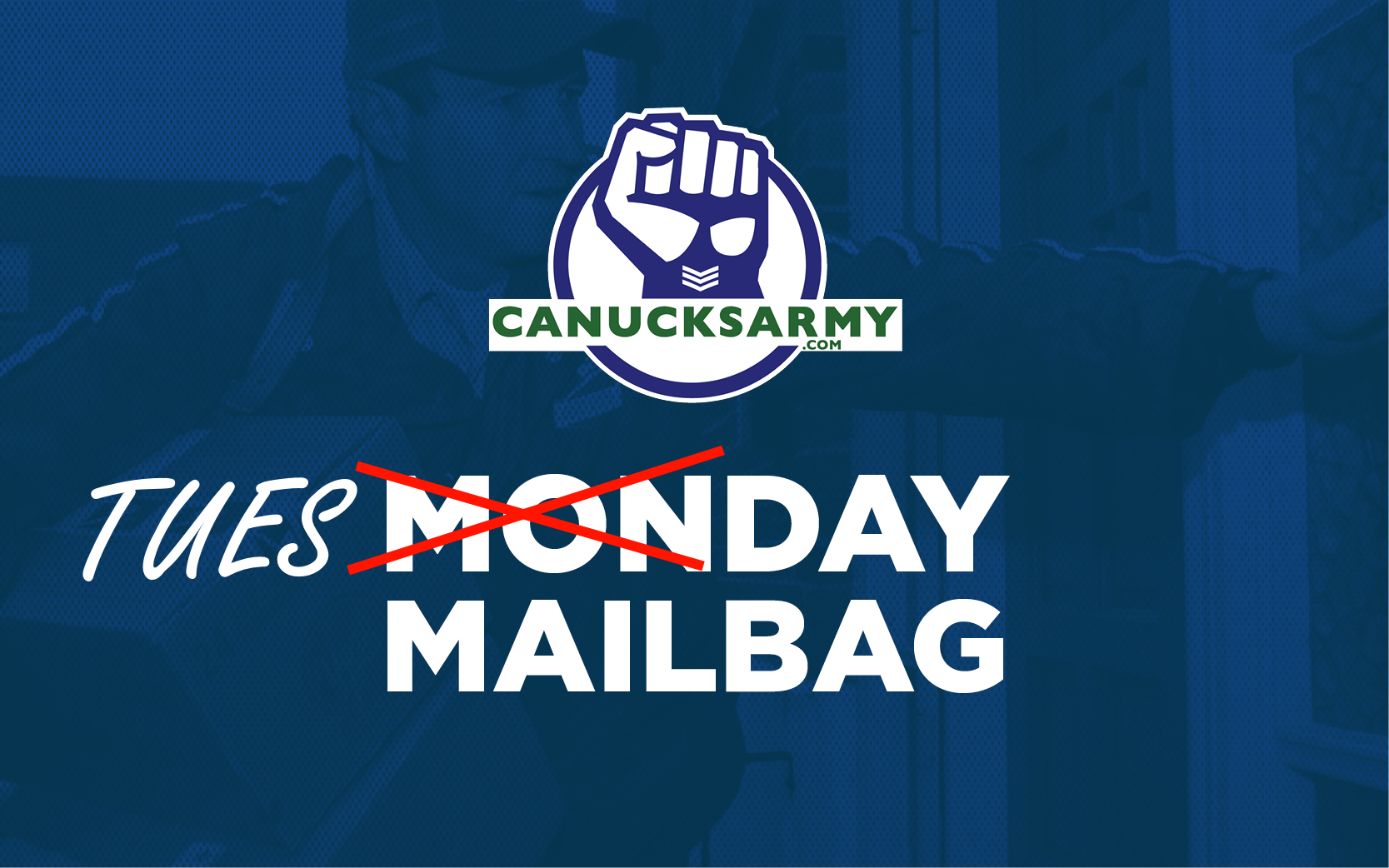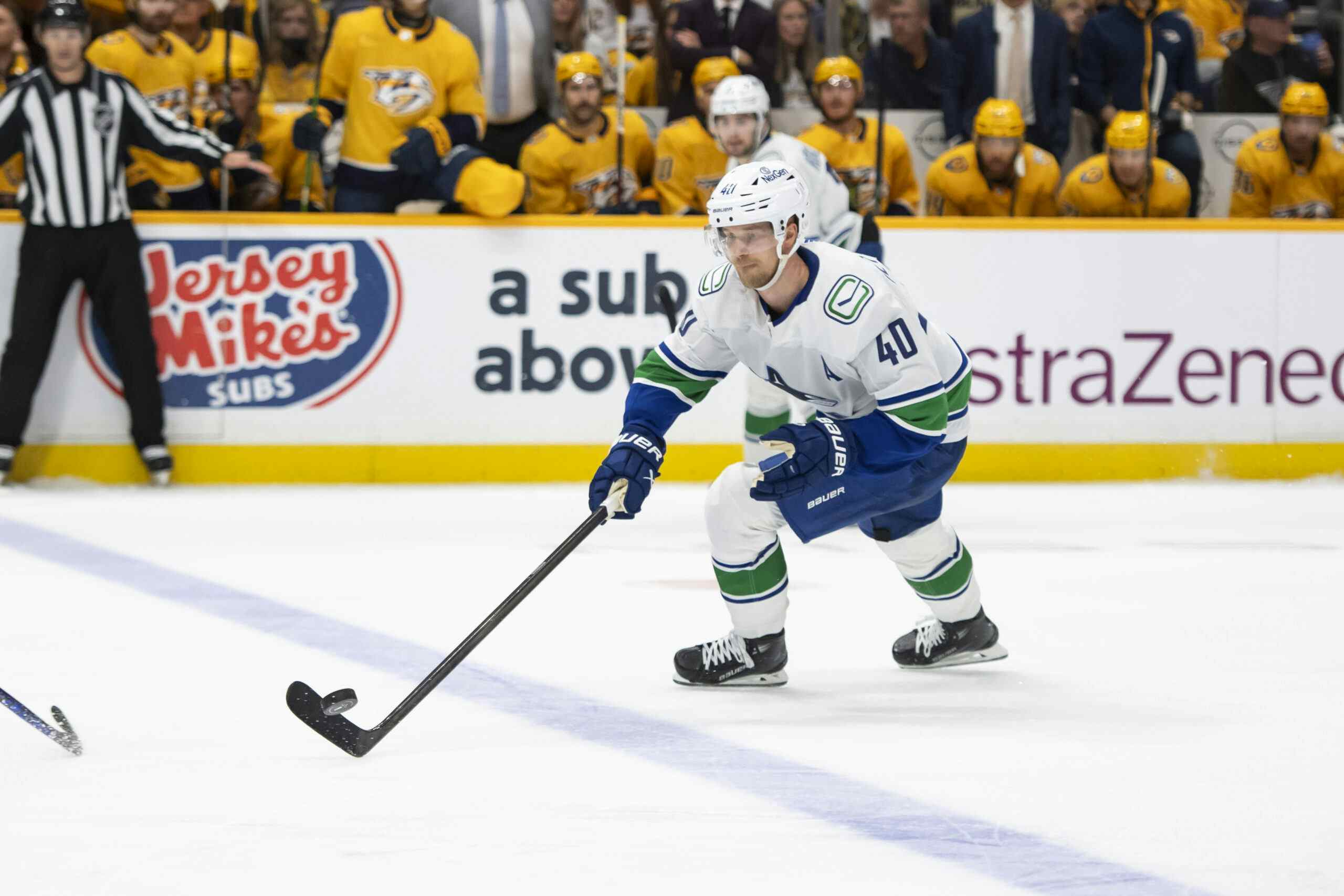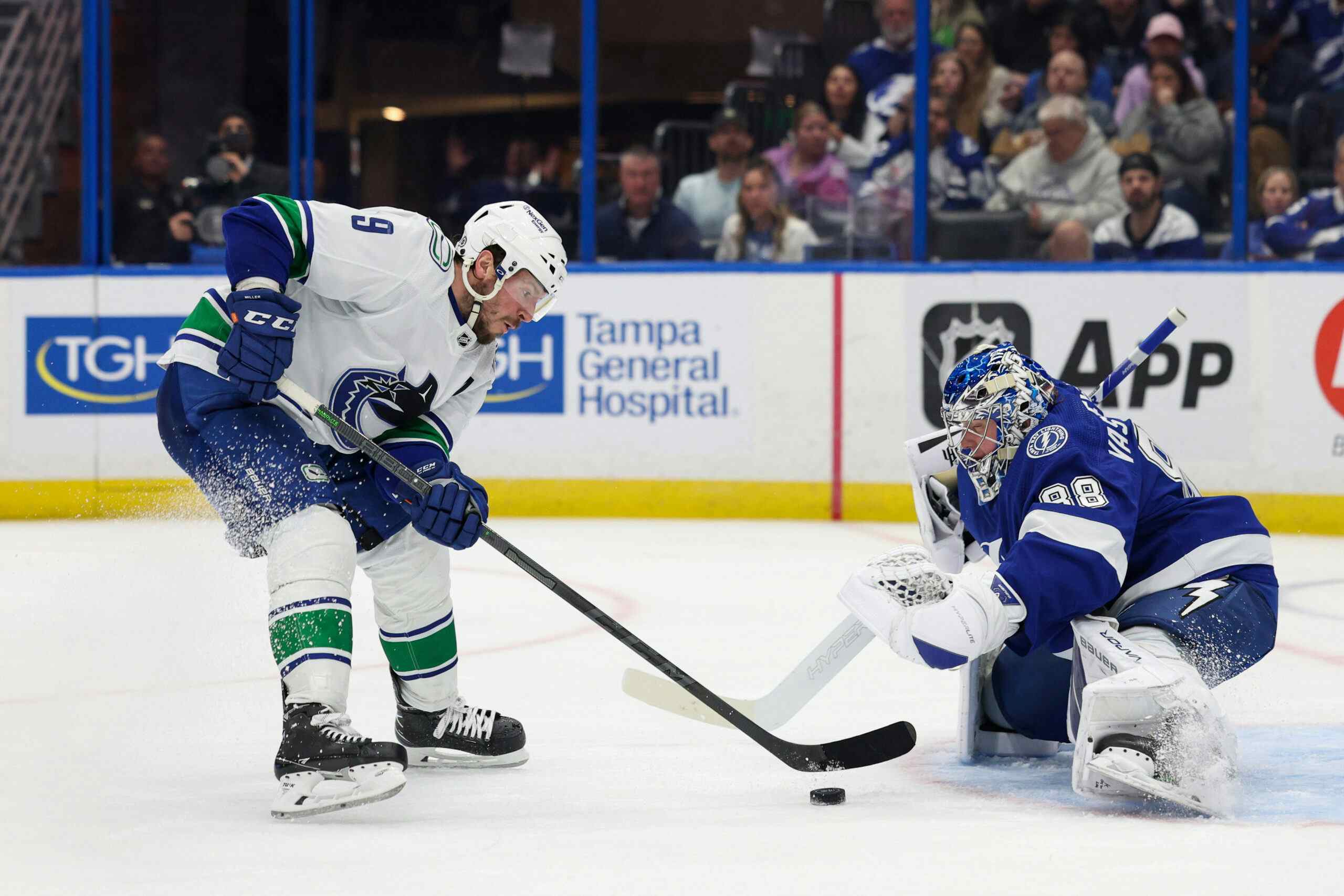Why the Canucks’ power play is successful, but still not pretty
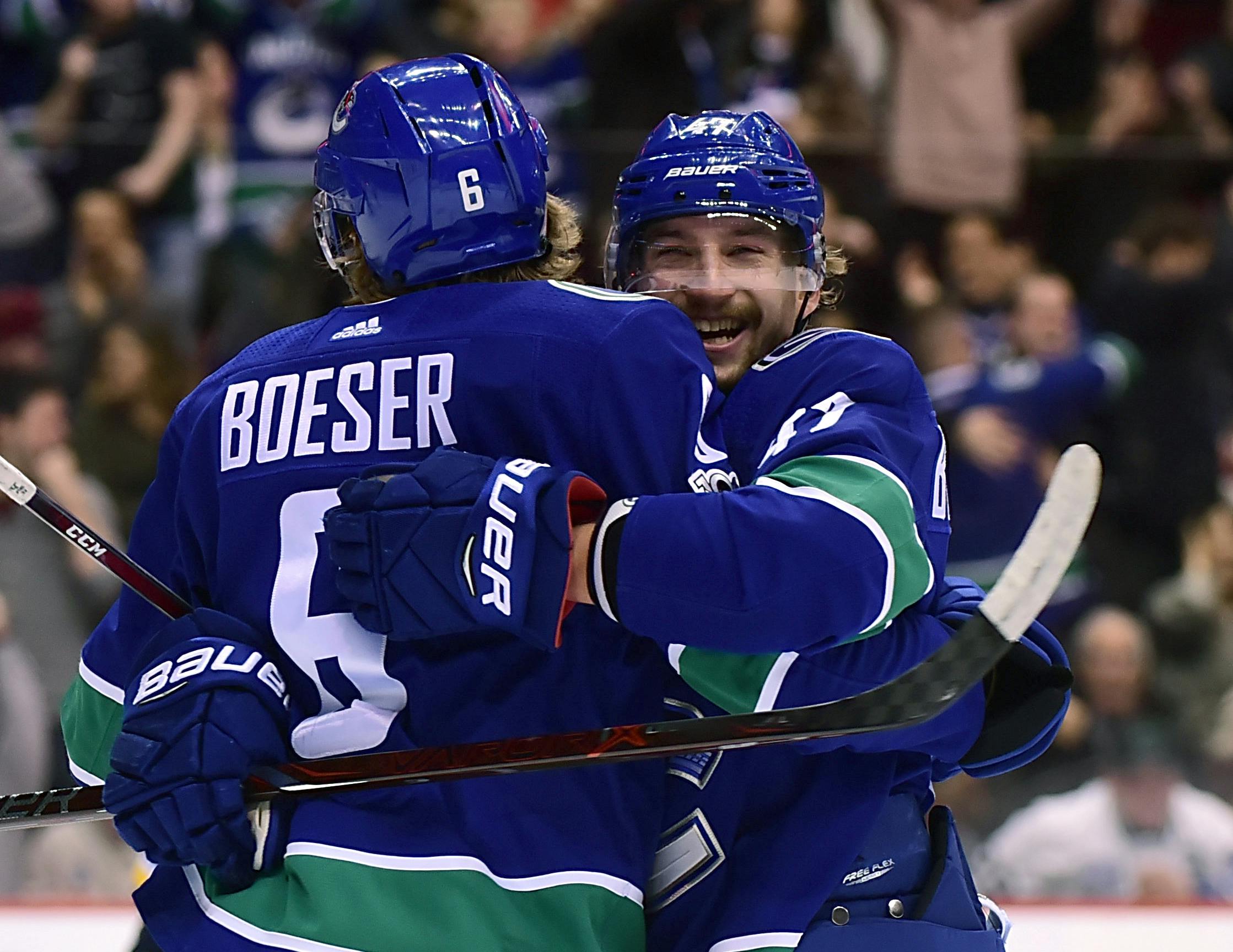
On October 23, 2017, just seven games into the season, the Canucks ranked 27th in the NHL in power-play percentage, and I broke down what was going wrong and what they could do to improve it. Now four months later, the team ranks eighth with a PP percentage of 21.3. If we ignore those first seven games of the year, things are even better, with goals on 23.8 percent of their man advantages, good for third in the NHL.
The lack of success in the early stages of the season did not appear to be the result of bad luck. Vancouver was a bottom-five team in PP Corsi for per 60 minutes, and they struggled mightily in getting shots through to the net.
Of course, the seven games I looked at in October were a tiny sample, but there were some glaring errors in the team’s play that desperately needed fixing. First of all, the Canucks struggled to get into and stay in formation. Second, their power play was very static, with simple back-and-forth passes and little player movement. And third, they didn’t shoot much, and when they did, the shots came from low-danger areas.
To find out what changed, I looked at every power-play goal the Canucks have scored so far this season. But before we get into that, let’s take a look at some statistical work done on special teams, and how that can help us understand what’s happening in Vancouver.
The ideal PP strategy
Over the past few years, we have taken some significant leaps in the quest to understand how special teams work and what makes them successful.
In 2015, former New York Rangers goaltender Steve Valiquette introduced the ‘Royal Road’ concept. It’s a simple idea: If a team quickly moves the puck from one side of the offensive zone to the other, it forces the goalie to move across the crease within split seconds. In addition, the entire penalty-killing unit needs to adjust. As the puck can travel faster than any player on the ice, this often gives players a prime scoring opportunity.
To quantify this movement, the Royal Road was invented. It is a vertical line that cuts the offensive zone in half and goes up to the top of the faceoff circles.
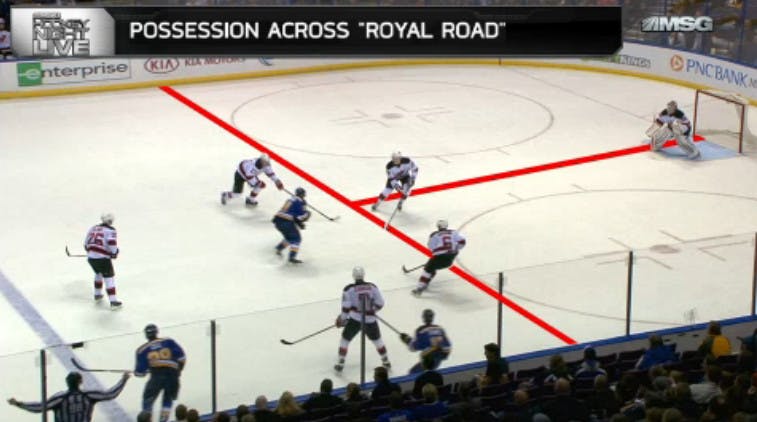
Thanks to work done by The Athletic’s Prashanth Iyer using data from Ryan Stimson’s Passing Project, we can quantify the impact of Royal Road passes:
“If any of the three passes prior to a shot crossed the Royal Road, the shot went in 24.3 percent of the time compared to 9.4 percent of the time if there were no Royal Road passes. If the pass immediately prior to a shot crossed the Royal Road, the shooting percentage creeps up to 25.6 percent.”
So, if any one of the three passes leading up to a shot crosses the Royal Road, that shot becomes more than twice as likely to result in a goal.
This concept is exactly what makes some of the NHL’s most successful PP units as good as they are. The Tampa Bay Lightning, for example, focus entirely on passing the puck back and forth between forwards Steven Stamkos and Nikita Kucherov on opposite sides of the offensive zone, with both posing threats to the goaltender. As a result, the duo has 29 and 28 power-play points, respectively, and the Lightning rank second in the league in power-play percentage.
In addition, Arik Parnass, now an analyst with the Colorado Avalanche, analyzed what shot types are the most dangerous on the man advantage. Iyer confirmed Parnass’s findings, for the most part, showing that tips and rebounds have the highest shooting percentage in five-on-four situations.
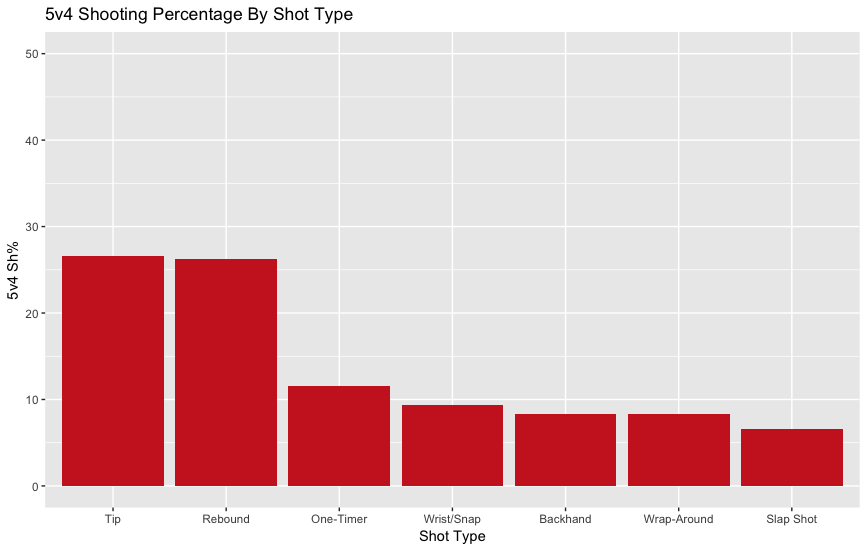
Visualization by Prashanth Iyer, The Athletic
One-timers, which often appear like the best play on the man advantage thanks to a handful of players that have perfected it (e.g. Alex Ovechkin, Patrik Laine), are only the third-most successful. The slap shot, particularly popular in ‘old-school hockey,’ has the lowest probability of resulting in a goal among the seven shot types.
Further, Iyer showed that – due to the number of shots taken per each type – the majority of power-play goals comes on wrist shots. Thanks to Royal Road passes followed by one-timers being a popular strategy, one-timers come in second. Rebounds and tips only make up for 27.47 percent of five-on-four goals.
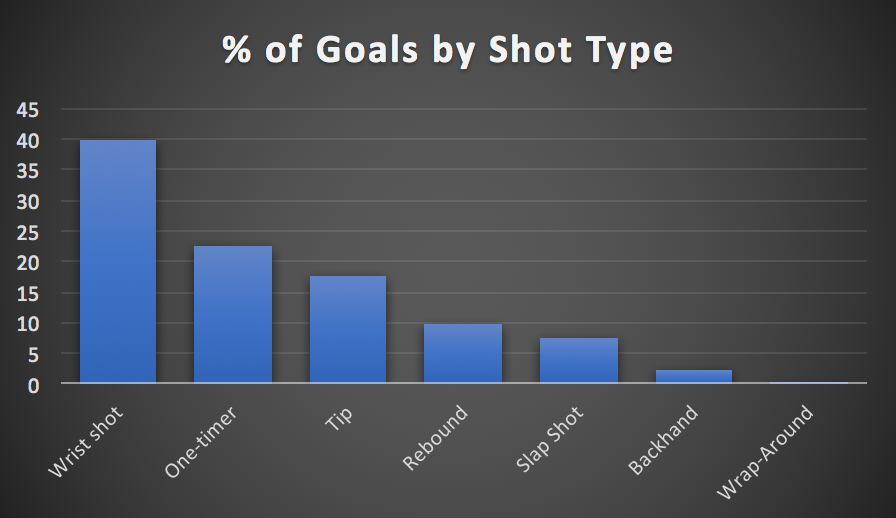
So, with this in mind, what can we say about the Canucks’ power play this season?
Vancouver by the numbers
Re-watching the Canucks’ PP goals, I expected some big changes compared to my first piece in October. I expected them to have gotten much better at moving the puck. I expected them to have increased the number of shots they take on each man advantage. And I expected them to have gotten a lot smarter when it comes to shot selection and positioning.
But at first sight, none of this happened.
What stands out is that the Canucks have scored few goals following Royal Road passes. Of this season’s 33 PP goals scored after getting set up in formation in the offensive zone (nine were off the rush), only seven came with one of the last three passes leading up to the goal crossing the Royal Road.
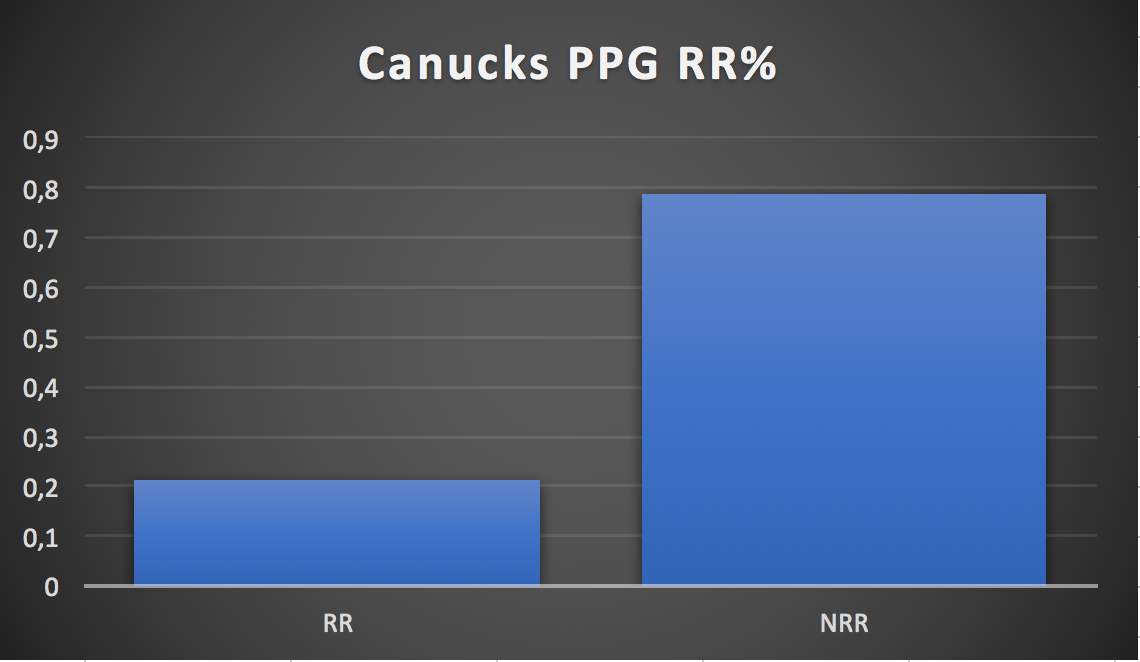
The issue here is not that the Canucks are unusually unlucky following Royal Road passes. Instead, they simply don’t try them very often.
Again and again, we see passing sequences like Henrik Sedin to Daniel Sedin and back to Henrik. Then up to Alex Edler and over to Brock Boeser. But a quick pass by Henrik from the right half-boards across to Boeser on the other side and a one-time finish is relatively rare.
Even when the Canucks do set Boeser up for one-timers, they tend to do it around the penalty-killers rather than through the middle. In the clip below, also note how much time passes between Henrik moving a few feet down the boards and his first pass to a different area of the ice – here, back to Edler at the point. The reason why this is happening is that the Canucks’ PP is still very static. Between 1:37 and 1:30 on the power-play clock, none of Henrik’s passing options move, and neither does he.
Another thing that really stands out is that, despite having a competent option in Boeser, the Canucks don’t score on one-timers very often. Of Boeser’s ten power-play goals this season, only two were one-timers. Aside from Boeser, only one other Canuck has tallied a goal off a one-timer: Sam Gagner – who got just a single one. With that, one-timers account for just 9.1 percent of the Canucks’ PP goals.
While the percentage of wrist-shot goals is roughly in line with Iyer’s findings, the Canucks’ biggest success has come from rebounds. Vancouver still doesn’t shoot much, ranking 25th in PP Corsi for per 60 according to Natural Stat Trick, yet the pucks they do get through seem to create a lot of danger around the net.

So what do the Canucks do to have one of the NHL’s most successful power plays using rather unconventional methods?
How they do it
A first thing that stands out is that upon entering the offensive zone, the Canucks don’t waste a lot of time before trying to get to the net. The clip below is an example of a chance that has all four forwards quickly moving toward the net and trying to get open for a shot.
When Loui Eriksson gets the puck on the left side, Gagner moves in to create traffic in front of the goalie. Sven Baertschi lifts up his stick to show he’s ready for a one-timer (he was covered here, but ready), and Thomas Vanek moves in to the far post with his stick on the ice to tip in a Royal Road pass.
As mentioned earlier, the Canucks don’t have a lot of Royal Road passes, so this clip is not the norm. However, other goals show a similar theme of wasting no time to get pucks at the net.
This can be observed in other situations as well. The Canucks don’t use their man advantage to get the upper hand in board battles or to protect the blue line in case of a turnover. Instead, they have a weak-side player staying out of it, ready to receive a set-up pass if the board battle is won. The goal here is not to get a player open with space to get set up in their 1-3-1 formation – they simply want to have someone ready to get the puck at the net.
In the clip below, Boeser could stay at the top of the circle, control the pass, and wait for his teammates to set up. But instead, he moves closer to the net the second he sees Daniel with the puck, getting himself into a better shooting position.
Getting pucks on net is really the dominating concept in all situations. While the Canucks struggle to produce a great shot volume, they do shoot as often as they see fit, and very often from low-danger positions as well.
But, two small details can turn the whole operation into a success.
One important thing to note is that not every shot is meant to score. Unless there is an open shooting lane that allows a player to get a wrist shot, slap shot, or one-timer at the net from a high-danger position, players don’t shoot to score.
Rather, they do one of two things: One, fire pucks low at the goaltender’s pad to create rebounds, or two, shoot/pass low to find teammates for deflections.
Secondly, once the forwards read that a teammate is about to shoot – no matter where he’s shooting from – they crash the net. In the clip below, Baertschi is positioned in front of the net screening the goalie. As Boeser shoots from just inside the blue line, the remaining three – Bo Horvat, Michael Del Zotto, and Ben Hutton – all move in toward the net to get behind the first row of penalty killers and open for a rebound. If you go back to the Boeser goal above, you can observe a similar process.
The final important factor is, of course, player personnel.
Before the 2017-18 season, the Canucks added Boeser and Vanek, who rank first and third, respectively, on the team in power-play scoring. That is in addition to a group that includes the Sedin twins, who have been PP specialists for decades, and Horvat, the team’s top scorer in 2016-17.
Boeser, in particular, gave the Canucks a huge boost. When a player can beat Carey Price glove-side in a situation where Price had all the time in the world to prepare, that’s huge for any power play, and it doesn’t have much to do with the team’s actual strategy. Getting the puck to Boeser is a smart one, and that’s what the Canucks have been doing – resulting in 10 PP tallies for the rookie.
Where would Vancouver’s power play be without Boeser, who has also displayed strong passing skill? It is impossible to say how many goals and assists his replacement would have scored, but I would assume a Boeser-less power play would be much closer to last season’s success rate than this.
Overall, the Canucks haven’t changed a lot.
When Vancouver scored on a power play against the Calgary Flames on November 8, play-by-play commentator John Shorthouse made a comment that fits a lot of Canucks power plays this season: “The Canucks on a power play that seemed to go nowhere open the scoring.”
In October, I wrote that chemistry is an essential factor and we should be able to see automatic improvements as the units get used to playing with each other over time. They now had a lot of games to do that. They also improved in regards to movement in the offensive zone and managed to improve their work in close to get their rebound numbers up. But even considering all that, their play often still looks quite uninspired.
So is it sustainable?
Fact is: The Canucks’ power play still isn’t pretty. They rarely have dominant power-play shifts where they get set up in formation and can string some dangerous passes together to create prime scoring chances. Instead, they focus on getting pucks to the net from low-danger positions, often from the point or the half-boards, which is a very traditional and outdated concept.
It has been working, but the Canucks are also riding a 14.84 shooting percentage on the power play, which is good for fifth in the NHL. If that number regresses, and there’s reason to believe that it will, we could quickly end up analyzing what’s going wrong rather than right again.
Recent articles from Janik Beichler

